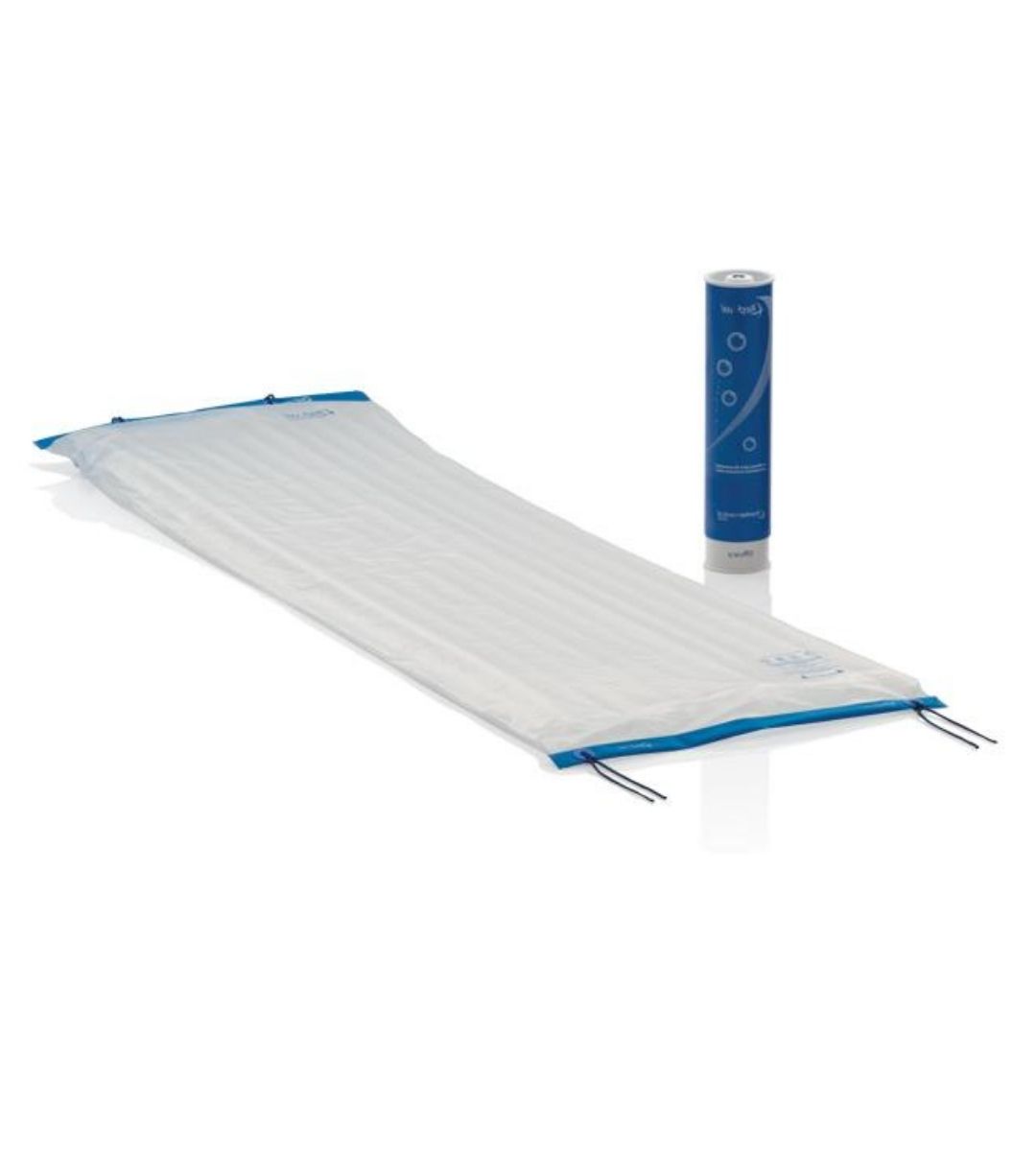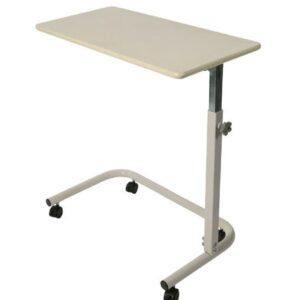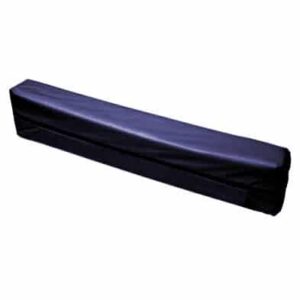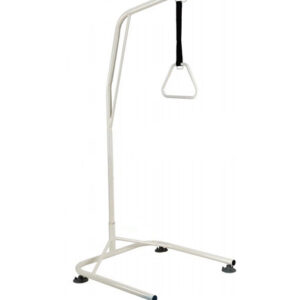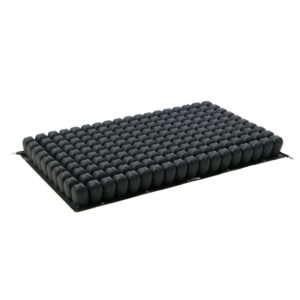Description
The Repose Overlay is a non-powered, inflatable support surface designed to reduce pressure points and protect skin integrity. It uses ‘Low Air Technology’ to distribute weight evenly and reduce the risk of pressure injuries.
The overlay inflates using a manual pump that automatically sets the correct pressure, eliminating the need for electricity or adjustments.
Made from durable polyurethane, it secures easily to existing mattresses and wipes clean for ongoing hygiene.
Its foldable design makes it easy to transport or store when not in use.
Who it’s for
- For clients needing a lightweight, non-powered pressure care solution.
- For therapists seeking a portable, easy-to-maintain overlay for clients at risk of pressure injuries.
Key features
- Low Air technology – evenly distributes weight for pressure care
- Manual pump inflation – sets correct pressure without electricity
- Lightweight and portable – easy to use and store
- Adjustable straps – keeps the overlay in place on the mattress
- Wipe-clean polyurethane – supports hygiene protocols

